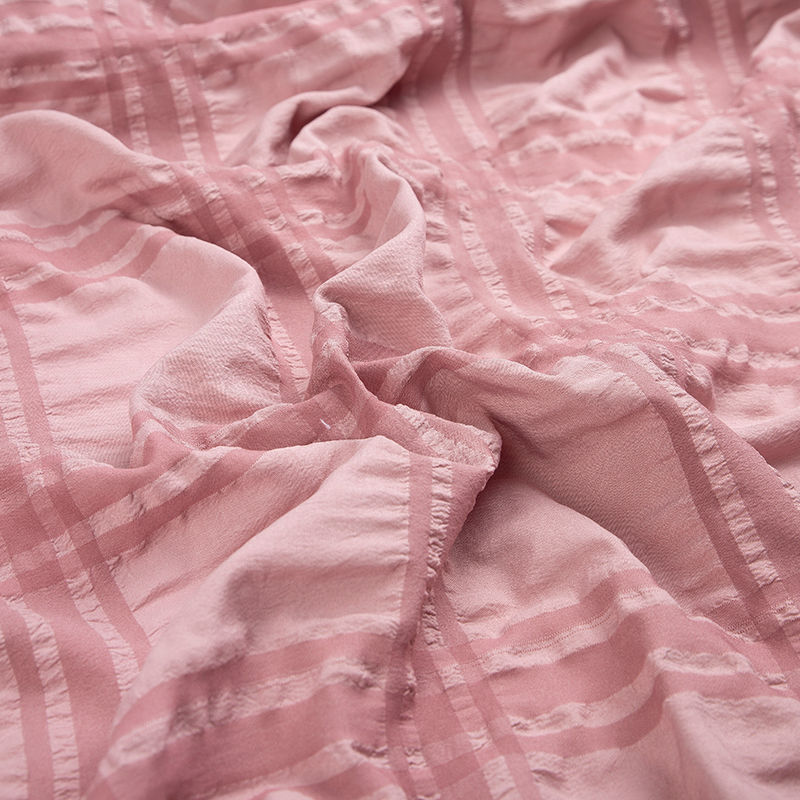Premium quality since 2002!
Polyester seersucker fabric, known for its unique texture and comfort, is widely used in the textile industry. With advances in technology, the production processes of polyester seersucker fabric have continued to evolve, meeting the market’s demand for high-quality, cost-effective, and environmentally friendly products.
1. Production Process of Polyester Seersucker Fabric
The production process of polyester seersucker fabric involves several key steps, including fiber selection, weaving, dyeing, and finishing. Each step of the process directly affects the final quality of the fabric.
Fiber Selection: Polyester seersucker fabric is typically made from high-strength polyester fibers. Polyester fibers are known for their excellent tensile strength and abrasion resistance, which ensures the fabric’s stability over time. Manufacturers often choose high-quality polyester raw materials to ensure the fabric’s softness and breathability.
Weaving Process: The weaving process for polyester seersucker fabric is complex, typically employing plain weave or twill weave techniques. The fabric’s characteristic crinkled texture is achieved by manipulating the arrangement of the yarns and the weaving structure. Different weaving techniques will directly impact the fabric’s appearance and feel.
Dyeing and Printing: The dyeing process for polyester seersucker fabric requires the use of appropriate dyes to ensure vibrant and long-lasting colors. Advanced dyeing techniques, such as high-temperature dyeing and digital printing, enable the fabric to showcase a wide range of colors and intricate patterns. Compared to traditional dyeing methods, modern dyeing technologies are more environmentally friendly, reducing water and air pollution.

Finishing Process: The finishing process includes setting, softening, and wrinkle-resistant treatments. These treatments improve the fabric’s feel, making it softer and more comfortable, while also enhancing its resistance to wrinkles and durability. Modern finishing techniques use environmentally friendly, non-toxic chemicals to ensure the fabric’s safety and sustainability.
2. Application of Innovative Technologies
With the development of technology, the production process of polyester seersucker fabric has seen continuous innovation. For example, the application of intelligent textile technologies has made the production process more precise and efficient, reducing resource waste. Furthermore, the integration of nanotechnology and functional fibers has added extra benefits to polyester seersucker fabric. These innovations have made it possible for the fabric to offer additional features such as antibacterial properties, water resistance, and UV protection, expanding its applications even further.
3. Sustainability and Environmental Trends
With the increasing global awareness of environmental protection, the textile industry faces stricter environmental regulations. The production of polyester seersucker fabric is following this trend by incorporating recyclable polyester fibers and eco-friendly dyes. Recycling technologies have improved, allowing polyester seersucker fabric to better integrate into a circular economy. Additionally, saving water and energy during the production process has become a priority to reduce environmental impact.

 English
English 简体中文
简体中文









